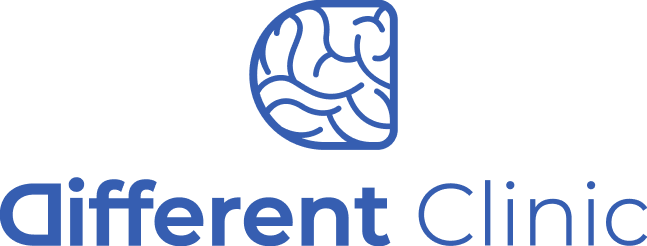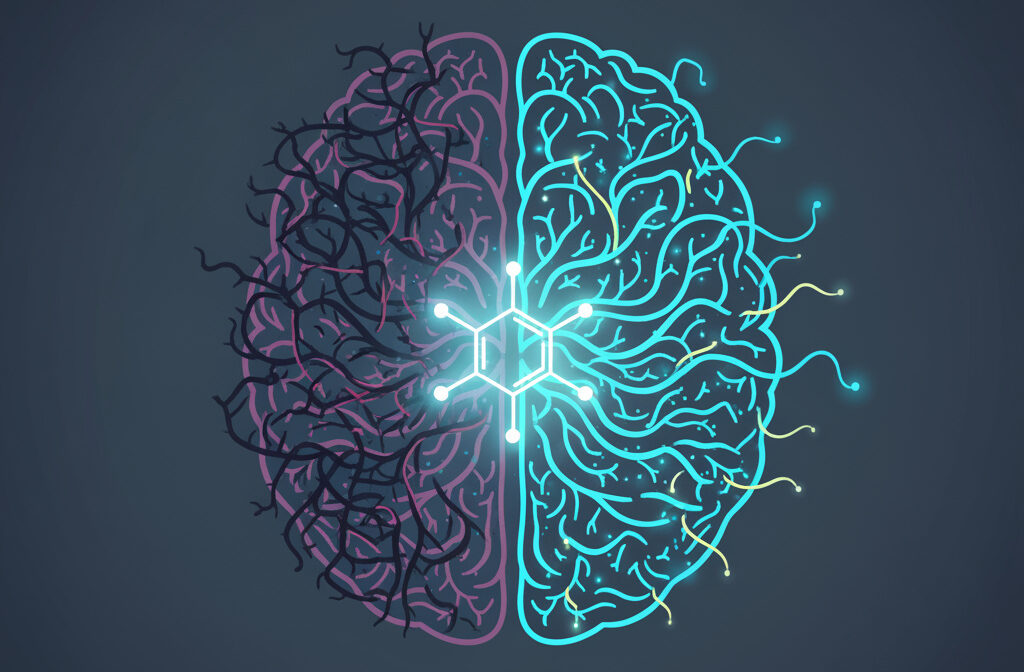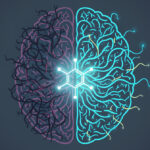Introduction: A New Path Through the Fog
Imagine waking up every day under a cloud that won’t lift. You’ve tried the pills, the therapy sessions, the mindfulness apps everything your doctor suggested, but the weight of depression, anxiety, or chronic pain still presses down on you. It’s a lonely place to be, isn’t it?
For years, I’ve heard stories from friends and patients alike who’ve felt stuck in this cycle, desperate for something anything that works. Then there’s ketamine therapy, a treatment that’s been quietly rewriting the rules of mental health care and pain management.
You might know ketamine as an anesthetic from the operating room or even as that infamous party drug whispered about in certain circles. But today, it’s stepping into a new spotlight, one that’s less about sedation or escape and more about hope. How does ketamine therapy work? How can a single compound shift the brain in ways that ease suffering when other treatments fail? That’s what we’re diving into here.
In this guide, I’ll break down the science of how ketamine therapy works in a way that’s easy to grasp no PhD required. We’ll explore how it tinkers with your brain’s wiring to tackle depression, anxiety, and chronic pain, using simple analogies and real-world stories to bring it to life. By the end, you’ll not only understand the “why” and “how” but also get a sense of whether this might be the next step for you or someone you love. Ready? Let’s step into the world of ketamine and see what it’s all about.
Key Concepts: Unlocking the Brain’s Secrets
Before we get into the nitty-gritty of how ketamine therapy works, let’s lay some groundwork. Two big players in this story are NMDA receptors and neuroplasticity. Don’t let the jargon scare you I promise to keep it simple.
NMDA Receptors: The Brain’s Traffic Lights
Picture your brain as a bustling city, full of highways where messages zip between neurons (brain cells) all day long. These messages are carried by chemicals called neurotransmitters, and one of the VIPs is glutamate. It’s like the fuel that keeps your mood, memory, and even pain signals running smoothly.
Now, NMDA receptors are the traffic lights at key intersections. They decide when glutamate gets through to the next neuron and how much of it does. Normally, this system hums along just fine. But in conditions like depression or chronic pain, it’s like the lights get stuck on red or worse, they start flashing chaotically. The signals get jammed, and your brain struggles to process things the way it should.
Here’s where ketamine swoops in. It’s an NMDA receptor antagonist, which is a fancy way of saying it flips those traffic lights to “pause” for a bit. By blocking the NMDA receptors, ketamine stops the usual flow of glutamate signals temporarily. Sounds counterintuitive, right? Why would blocking something help? Stick with me it’s about what happens next.
For a deeper dive into NMDA receptors and their role in brain function, check out this detailed overview from the National Institutes of Health.
Neuroplasticity: Rewiring the City Grid
If NMDA receptors are the traffic lights, neuroplasticity is the city’s ability to rebuild its roads. Your brain isn’t static; it’s constantly adapting forming new connections, strengthening old ones, or letting unused pathways fade away. It’s how you learn to ride a bike or bounce back from a tough day.
But when you’re stuck in depression, anxiety, or chronic pain, it’s like the city’s road crew has gone on strike.
The same old routes negative thoughts, fear, or pain signals get deeper and harder to escape, while new, healthier paths don’t get built. Ketamine shakes things up. By hitting pause on those NMDA receptors, it triggers a surge of glutamate elsewhere in the brain, which kickstarts neuroplasticity. Suddenly, the road crew’s back, paving fresh pathways and fixing the broken ones.
Curious about how neuroplasticity works? Harvard Health offers a great explanation of neuroplasticity and its impact on mental health.
Think of it like rebooting a glitchy GPS. Ketamine doesn’t just mask the problem it helps your brain find a new route around it. That’s why it’s such a game-changer for people who’ve been stuck for years.
How Ketamine Therapy Works: A Step-by-Step Journey
So, what does this look like in real life? Let’s walk through how ketamine therapy works from the moment you step into a clinic to the days that follow.
Step 1: Getting Started
Ketamine therapy isn’t something you pick up at the pharmacy. It’s done in a controlled setting usually a clinic under a doctor’s supervision. The most common method is an IV infusion, where a small dose of ketamine drips into your bloodstream over about 40 minutes. There’s also a nasal spray (called esketamine, sold as Spravato) and even lozenges, but IV is the gold standard for precision.
Considering ketamine therapy? Book a consultation with Different Clinic to explore your options.
Step 2: The Brain Switch Flips
Once the ketamine hits your system, it goes straight to work. Within minutes, it latches onto those NMDA receptors, putting the brakes on their usual chatter. This causes a ripple effect: glutamate levels spike in other parts of the brain, lighting up areas that control mood and pain perception. It’s fast way faster than the weeks it takes most antidepressants to kick in.
Step 3: The “Trip” Experience
Here’s where things get a little trippy literally. During the infusion, many people feel a sense of dissociation, like they’re floating or detached from their body. It’s not the wild, reckless high you might associate with street drugs. In a clinical setting, it’s more like a calm, dreamlike state. Some describe it as peaceful; others say it’s just weird. Either way, it’s temporary, fading within an hour or so.
Step 4: The Afterglow
The real magic of how ketamine therapy works happens after the session. That glutamate surge doesn’t just fizzle out it sparks new connections between neurons. Over the next few days, your brain’s neuroplasticity ramps up, reshaping those stuck pathways. For some, it’s like the fog lifts overnight. For others, it’s a gradual shift a little more lightness, a little less pain.
Step 5: Building on the Change
One session might help, but most people need a series typically six infusions over two to three weeks to lock in the benefits. It’s like training your brain to stick to the new roads instead of slipping back into the old ruts. After that, some opt for “booster” sessions every few months to keep the momentum going.
Why It’s a Big Deal: The Benefits of Ketamine Therapy
Okay, so we’ve got the “how” down. But why is how ketamine therapy works such a hot topic? Here’s what sets it apart:
- Lightning-Fast Results: Traditional antidepressants can take a month to do anything if they work at all. Ketamine? You might feel better in hours. For someone in a dark place, that speed can be a lifeline.
- A Lifeline for the “Untreatable”: About one in three people with depression don’t respond to standard meds. Ketamine’s different approach targeting NMDA receptors and neuroplasticity works for 50-70% of these treatment-resistant cases.
- Gentler Than You’d Think: Sure, there’s that trippy feeling during the infusion, but side effects are usually mild think nausea or a bit of dizziness and they pass quickly.
- A Chance at Lasting Change: Because it rewires your brain, not just numbs the symptoms, ketamine can pave the way for deeper healing, especially when paired with therapy.
Where It Shines: Conditions Ketamine Therapy Helps Most
Ketamine isn’t a cure-all, but it’s a rockstar for certain struggles. Let’s break down the big three.
Depression: Lifting the Heavy Veil
Depression especially the kind that won’t budge is ketamine’s claim to fame. Studies show it can slash symptoms in up to 70% of people with treatment-resistant depression (TRD). How? By rebooting those stuck neural circuits and giving your brain a chance to rebuild.
For more on ketamine’s effectiveness in treating depression, see this study from the American Journal of Psychiatry. Curious about trying it yourself? Check out Different Clinic’s ketamine therapy options in Toronto.
Anxiety: Quieting the Storm
Anxiety often tags along with depression, and ketamine’s calming effects can help there too. It’s less researched, but early results are promising. By dialing down overactive brain signals, it can break that endless loop of worry like hitting mute on a blaring alarm.
Chronic Pain: Rewriting the Pain Script
For folks with conditions like fibromyalgia or complex regional pain syndrome (CRPS), ketamine’s a heavy hitter. It doesn’t just mask pain it disrupts the brain’s pain pathways. I heard about John, a 50-year-old with CRPS in his leg. Years of opioids barely touched it. After a few infusions, his pain dropped by half. He’s walking again, cane-free, and that’s no small win.
Research supports ketamine’s effectiveness for chronic pain, as detailed in this Pain Medicine review.
Bonus: PTSD and Beyond
Post-traumatic stress disorder (PTSD) is another frontier. Ketamine might help by softening the grip of traumatic memories, making them easier to process with a therapist. It’s still early days, but the potential’s there.
Clearing the Air: Common Misconceptions About Ketamine Therapy
Ketamine’s got a bit of a reputation, so let’s tackle some myths head-on.
- “It’s Just a Party Drug”: Yes, ketamine’s been abused recreationally. But in therapy, it’s a different beast low doses, medical oversight, no rave vibes. Context matters.
- “You’ll Get Hooked”: Addiction’s a valid worry, but in a clinic, you’re not popping it daily. A handful of sessions, spaced out, keeps the risk low.
- “It’s Too Good to Be True”: It’s not a quick fix. The relief can be dramatic, but it’s most effective when you build on it therapy, lifestyle shifts, the works.
Tips & Strategies: Your Ketamine Therapy Toolkit
Thinking about giving it a shot? Here’s how to approach it like a pro.
- Pick the Right Place: Not all clinics are equal. Look for one with a solid rep check reviews, ask about their experience. Different Clinic in Toronto’s a good bet if you’re local.
- Know the Price Tag: Sessions run $375 to $850, and insurance might not cover it. Some spots, like Field Trip Health, offer payment plans worth asking about.
- Prep for the Weird: That dissociation? It’s part of the deal. Load up a chill playlist or bring a stress ball to stay grounded.
- Plan Your Ride: You’ll be woozy post-session no driving. Have a friend or Uber on speed dial.
- Lean Into It: Pair ketamine with talk therapy if you can. It’s like fertilizing the soil after planting a seed those new brain connections grow stronger.
FAQs: Your Ketamine Questions, Answered
Got questions? I’ve got answers.
How long does a session take?
About 40-60 minutes for the infusion, plus some prep and wind-down time call it two hours total.
Is it safe?
In a clinic, yes. Side effects like dizziness or nausea are mild and short-lived. For comprehensive safety information on ketamine, visit NIDA’s ketamine facts.
How many sessions do I need?
Most start with six over a few weeks. Maintenance varies some do monthly boosters; others don’t.
Will I feel high?
Not really. It’s more like a floaty, out-of-body vibe controlled and temporary.
Conclusion: Could Ketamine Be Your Turning Point?
So, how does ketamine therapy work? It’s a bit like a master electrician rewiring a faulty circuit. By blocking NMDA receptors and supercharging neuroplasticity, it gives your brain a chance to reset easing depression, quieting anxiety, and dulling chronic pain in ways other treatments often can’t touch.
It’s not for everyone, and it’s not a magic wand. But for those who’ve tried it all and still feel lost, it’s a glimmer of something real hope backed by science. If that’s you, maybe it’s time to chat with your doctor or peek into a clinic near you. Who knows? The next step could be the one that changes everything.
Curious about how ketamine therapy works for you? Reach out to Different Clinic in Toronto at 647 325-9647 or swing by our website for a consultation. Your brain and your life might thank you.







Leave a Reply